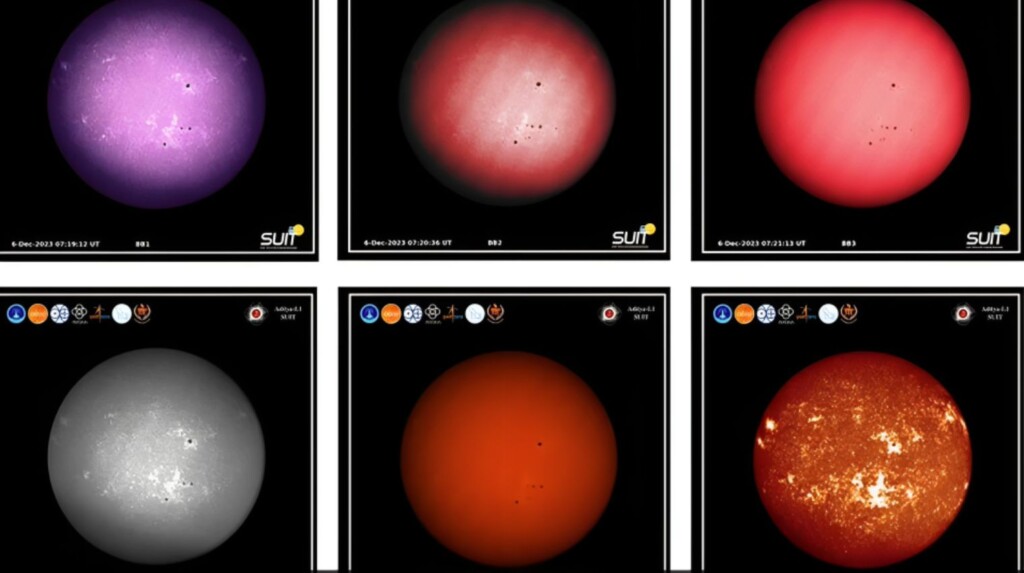India’s Aditya L-1 mission has successfully obtained the initial complete-disk photographs of the Sun using near ultraviolet wavelengths. These remarkable images were taken by the Solar Ultraviolet Imaging Telescope (SUIT) payload, which is part of ISRO’s inaugural space-based mission dedicated to studying the Sun. The images encompass the first-ever comprehensive representations of the Sun’s entire disk, spanning wavelengths from 200 to 400 nm.
ISRO shared these captivating images on social media platform X, accompanied by a statement highlighting their groundbreaking significance. According to ISRO, these images offer unprecedented insights into the intricate intricacies of the Sun’s photosphere and chromosphere.
The Solar Ultraviolet Imaging Telescope, one of the seven payloads aboard the Aditya L-1 mission, has been specifically designed to capture ultraviolet images of the solar photosphere and chromosphere. Its primary objective is to analyze the variations in the emitted light energy.
Before this, the Solar Wind Ion Spectrometer (SWIS), which is the second instrument in the Aditya Solar wind Particle Experiment (ASPEX) payload, commenced operations on December 2. Last month, the High Energy L1 Orbiting X-ray Spectrometer (HEL1OS) payload successfully captured the initial High-Energy X-ray observation of Solar Flares.
Aditya L-1 was launched on September 2 from the Satish Dhawan Space Centre in Sriharikota. The primary objective of this mission is to enhance our understanding of the Sun and its impact on us, including radiation, heat, particle flow, and magnetic fields.
The solar probe was transported into space by the Polar Satellite Launch Vehicle (PSLV), which is renowned for its reliability and versatility as a workhorse rocket of ISRO. Initially, the PSLV will position the Aditya L-1 in a lower Earth orbit. Subsequently, the spacecraft’s orbit will be gradually elevated multiple times before being placed on a trajectory towards a halo orbit around the L1 Lagrange point.
The PSLV-XL has the capability to lift payloads weighing up to 1,750 kg to the sun-synchronous polar orbit, where spacecraft are synchronized to maintain a fixed position relative to the Sun. Additionally, it can carry payloads weighing up to 3,800 kg to a lower Earth orbit, typically located at an altitude of less than 1,000 km but potentially as low as 160 km above the planet.
